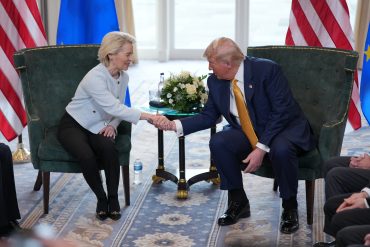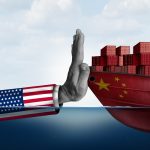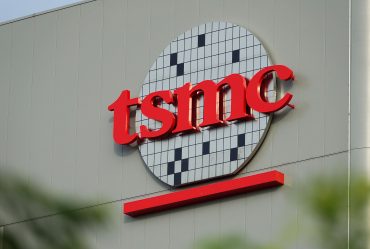
- Global Markets
- Trade Policy
US-EU Trade Pact Lifts Wall Street Futures on $1.35T Pledge
5 minute read

US-EU trade agreement drives Wall Street futures higher as European markets secure unprecedented energy purchase commitments
Key Takeaways
- Wall Street futures surge 0.4-0.5% following breakthrough US-EU trade agreement that sets 15% tariffs on European goods, averting threatened 30% rates
- EU commits $1.35 trillion in investments including $750 billion in US energy purchases and $600 billion in American economic investments to strengthen transatlantic ties
- Federal Reserve policy meeting begins this week amid critical earnings reports from Meta, Microsoft, Apple, and Amazon as markets brace for potential September rate cuts
Introduction
Wall Street futures climb across major indexes as investors respond positively to a new trade framework between the United States and European Union. The agreement establishes a 15% tariff structure on most European imports while securing substantial investment commitments from EU partners.
S&P 500 futures gained 0.4% to 6,447.25 points, while Nasdaq 100 contracts rose 0.5% to 23,528.75 points. The Dow Jones futures advanced 0.3% as markets prepare for a pivotal week featuring Federal Reserve policy decisions and major technology earnings reports.
Key Developments
President Donald Trump announced the trade framework from Scotland on Sunday, confirming the 15% tariff rate that replaces previously threatened 30% levies on European goods. The agreement includes unprecedented investment pledges from the European Union totaling over $1.3 trillion.
The EU committed to purchasing $750 billion in American energy products, primarily liquefied natural gas, alongside $600 billion in direct investments across US economic sectors. An additional $150 billion specifically targets energy infrastructure supporting data center and artificial intelligence expansion.
The deal addresses longstanding trade imbalances while positioning American energy exports as a cornerstone of transatlantic commerce. European officials emphasized the agreement’s role in strengthening bilateral relationships amid ongoing geopolitical tensions with Russia and China.
Market Impact
US equity futures demonstrate broad-based strength following the trade announcement. Dow Jones contracts climbed 161 points, representing a 0.36% increase, while European stock futures gained 0.9% on optimism surrounding the bilateral agreement.
Currency markets reflect the deal’s impact as the euro strengthens against the dollar. According to CNBC, commodity markets show mixed reactions with crude oil advancing 0.6% while gold prices decline.
The S&P 500 achieved five record highs last week, reaching 6,388.64 points on Friday. The NASDAQ Composite similarly notched all-time peaks as corporate earnings and trade optimism drive market sentiment higher.
Strategic Insights
The agreement creates winners and challenges across multiple sectors. American energy companies benefit significantly from guaranteed European purchases of liquefied natural gas, while technology infrastructure firms gain from EU commitments to data center investments.
European technology exporters face higher costs due to the 15% tariff structure, potentially reshaping supply chain strategies and pricing models. However, increased foreign direct investment flows could offset these challenges through expanded US operations and manufacturing capabilities.
Notable exclusions include pharmaceuticals and semiconductors, sectors that remain outside the current framework. These omissions create ongoing uncertainty for companies operating in tech-adjacent industries that await future negotiations.
Expert Opinions and Data
Analysts express cautious optimism while highlighting implementation uncertainties. ING researchers note significant concerns about formalization, stating “The big caveat to today’s deal is that there is nothing on paper, yet. The next hours and days will hopefully bring more clarity.”
Wall Street analysts question whether the full investment pledges will materialize, particularly given their legally non-binding nature. European commentators echo these concerns about enforceability of the $1.35 trillion commitment package.
Federal Reserve Governor Christopher Waller signals potential dissent at this week’s policy meeting, indicating support for rate cuts despite expectations that rates will remain between 4.25% and 4.5%. Thursday’s Personal Consumption Expenditures data becomes crucial given tariffs’ inflationary implications.
Conclusion
The US-EU trade framework provides market stability while introducing new dynamics across energy, technology, and investment sectors. Higher costs for European tech exports contrast with substantial investment flows that could reshape transatlantic business relationships.
Markets now focus on Federal Reserve policy decisions and major technology earnings reports that will determine whether current optimism translates into sustained gains. The deal’s ultimate success depends on successful implementation of investment commitments and resolution of excluded sectors through future negotiations.








